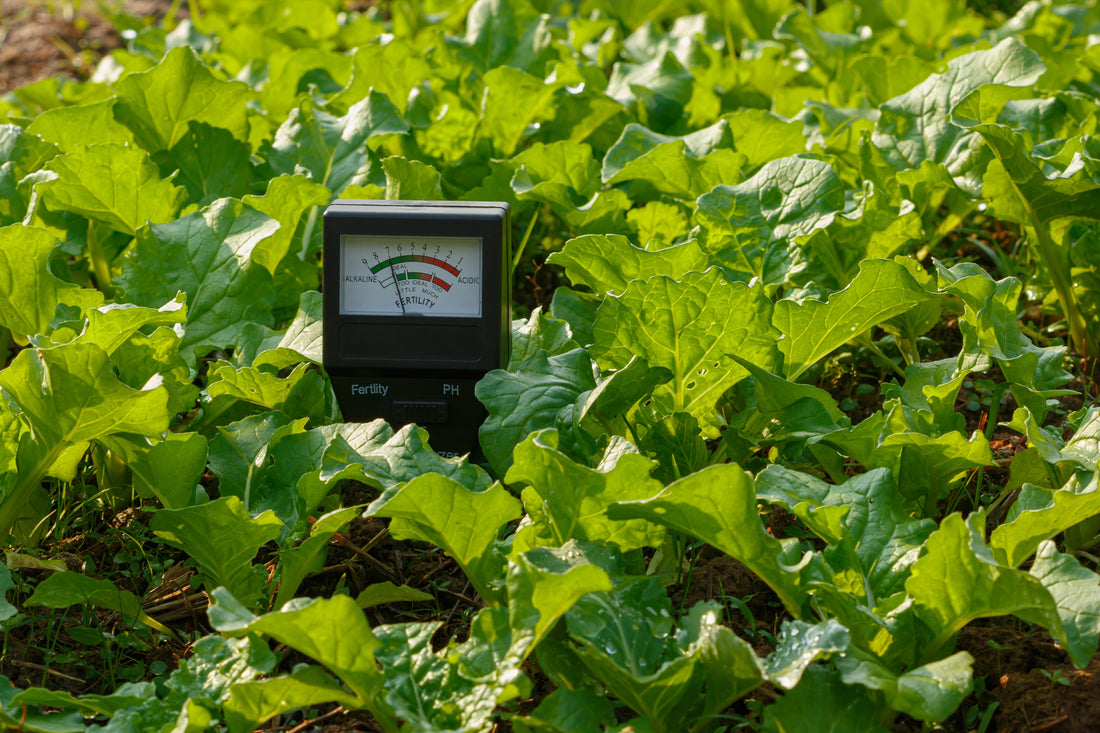What Should the pH of Compost Be?
It's important to note that the pH levels in a compost bin will vary throughout the decomposition process. The finished compost however will usually be pH neutral or slightly alkaline, composting bacteria grow at their fastest rate in these neutral conditions In the HOTBIN you should not need to check the pH as after approximately 90 days the finished product will usually self-correct to neutral pH without the need for any pH balancing additives.

Should I Care What pH Level My Soil Is?
Knowing the pH level of your compost isn't a necessity however, when coupled with knowledge of your soil structure you will have a great insight for planning what to grow in your garden. Soil tests area available online for a range of prices if you wish to delve deeper into the quality of your compost. Some plants prefer different environments in regard to soil types (such as clay/sandy), exposure to sunlight (some like direct sun whilst others prefer the shade) and differing pH levels. Knowledge of pH levels and soil structures can help you make necessary adjustments for your growing spaces to create the right planting mix for whatever you choose to grow. To establish the pH levels of your compost you can use a soil test kit or a pH meter. These are usually available to purchase from local garden centres.
Acidity in the Compost Heap
Compost can be acidic under two situations, the first during the initial stages of decomposition where organic acids are produced at a higher rate and the second where oxygen is restricted. High levels of acidity (below pH 6) slow the rate of composting, it's a sign that the compost is not yet ready. This increase in acidity in an active compost bin is usually due to restricted airflow and lowered oxygen concentrations in the waste. These two factors limit organic acid breakdown and result in the build-up of acid and ultimately an acidic pH. Consequently, if the contents of your compost bin turn anaerobic due to a lack of aeration, you will likely find that the pH level of the material is acidic. The same is also true for waste which you add to the HOTBIN which has already started heavily decaying anaerobically. Similarly high alkalinity can also slow composting down with excess nitrogen released as ammonia gas.
Can I Make Acidic Compost in the HOTBIN?
Many plants require acidic/ericaceous compost such as blueberries, hydrangea and heathers to name a few. If you are attempting to tackle alkaline soil, making acidic compost is unlikely to be the best route. Bacteria in the compost heap work best at neutral Ph, if the contents of the bin goes acidic (due to organic acids found in all plants), the compost will turn anaerobic, stink and slow down to a halt. It will be better leaving the compost to work at neutral Ph and tackling high levels of soil acidity or alkalinity separately. This can be balanced using lime (if acidic) or sulphur/citrus fruit (if alkaline). In a compost bin however the addition of these additives is not recommended as it can cause more problems than it solves. Simply ensure waste is sufficiently aerated (to control acidity) and has enough carbon (to correct alkalinity) keeping the bin working aerobically and allowing the HOTBIN to self-correct to neutral pH. For more information on soil acidification have a look at the RHS.
Can HOTBIN Compost Be Used for Any Plants?
HOTBIN compost is suitable for all plants and works well for vegetable beds and top dressing, however as the finished product is quite rich in nutrients you may need to create a 'diluted' potting mix for seedlings. Compost affects the amount of nutrients in the soil, the soils water retention capabilities and levels of oxygen reaching the roots. When planning what to grow take note of soil structure and how much compost you are adding. You can find out more about the scientific make up of compost here.
Compost and Soil Structure
HOTBIN compost has much better water retention properties due to the high percentage of humus. Like all compost however it can dry out when exposed to long periods of heat, when this happens the soil will be crumbly and create an unsupportive structure for plants roots. From a scientific perspective, the organic matter converts from hydroscopic to a hydrophobic (water repelling) chemical molecular structure, so once fully dried it tends not to 're-wet' and not stick well which creates the loose soil structure.
Points of Note to Remember:
- Acidic heaps are most common if aeration fails, maintaining good aeration will neutralise pH levels as more air/oxygen is fed into the waste. • Alkaline heaps are most common when fire ash is added or excess nitrogen/ammonium is present.
- Adding easy to digest carbon material will help balance pH, such as wood/paper. • pH levels will vary based on the maturity of the compost, acidic in the early stages and neutral/alkaline for more mature compost. • Acid loving plants (ericaceous) include shrubs such as azaleas, rhododendrons, hydrangea and gardenias.
- Alkaline soil loving plants include dianthus, purple crocus, geranium and some clematis.

